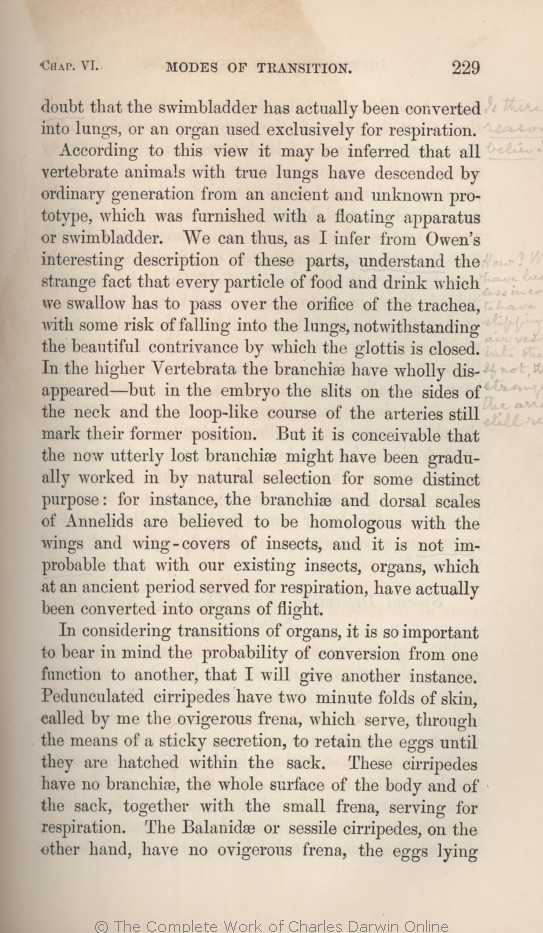has actually
been converted into | been converted into 1869 1872 |
| converted a swimbladder into a 1859 1860 1861 1866 |
| lungs, 1869 1872 | | lung, 1859 1860 1861 1866 |
| an organ 1869 1872 | | organ 1859 1860 1861 1866 |
|
|
According to this view it may be inferred | According to this view it may be inferred 1869 1872 |
| I can, indeed, hardly doubt 1859 1860 |
| On this view it may be inferred 1861 1866 |
| with 1869 1872 | | having 1859 1860 1861 1866 |
| have 1859 1860 1861 1866 1869 | | are 1872 |
| and unknown prototype, which was 1869 1872 |
| prototype, of which we know nothing, 1859 1860 1861 1866 |
| swimbladder. 1859 1866 1869 1872 | | swim-bladder. 1860 1861 |
| ..... 1869 1872 | | Professor 1859 1860 1861 1866 |
| Owen's 1859 1861 1866 1869 1872 | | Owens 1860 |
| Vertebrata 1859 1860 1861 1866 1869 | | Vertebrate 1872 |
| disappeared—but 1869 | | disappeared— 1859 1860 1861 1872 | | disappeared—in 1866 |
| in the embryo the 1869 |
| the 1859 1860 1861 1866 |
| but in the embryo the 1872 |
| slits 1859 1860 1861 1869 1872 |
| embryo the slits 1866 |
| mark 1869 1872 |
| marking in the embryo 1859 1860 1861 |
| marking 1866 |
| ..... 1869 1872 | | quite 1859 1860 1861 1866 |
| for instance, 1869 |
| in the same manner as, on the view entertained by some naturalists that 1859 1860 1861 1866 |
| for instance, Landois has shown that 1872 |
| branchiæ and dorsal scales of Annelids are believed to be homologous with the wings and wing-covers 1869 |
| branchiæ and dorsal scales of Annelids are homologous with the wings and wing-covers 1859 1860 1861 1866 |
| wings 1872 |
| insects, 1859 1860 1861 1866 1869 | | insects 1872 |
| and it is not 1869 |
| it is 1859 1860 1861 1866 |
| are developed from the tracheæ; it is therefore highly 1872 |
| improbable 1869 | | probable 1859 1860 1861 1866 1872 |
| with our existing insects, organs, which at an ancient period 1869 |
| organs which at a very ancient period 1859 1860 1861 1866 |
| in this great class organs which once 1872 |
| respiration, 1869 | | respiration 1859 1860 1861 1866 1872 |
| actually been 1869 | | been actually 1859 1860 1861 1866 1872 |
| of 1859 1860 1861 1866 1869 | | for 1872 |
|
|
In considering transitions of organs, it is so important to bear in mind the probability of conversion from one function to another, that I will give
another | another 1869 1872 | | one more 1859 1860 1861 1866 |
| of the sack, together with 1869 1872 |
| sack, including 1859 1860 1861 |
| of the sack, including 1866 |
|









